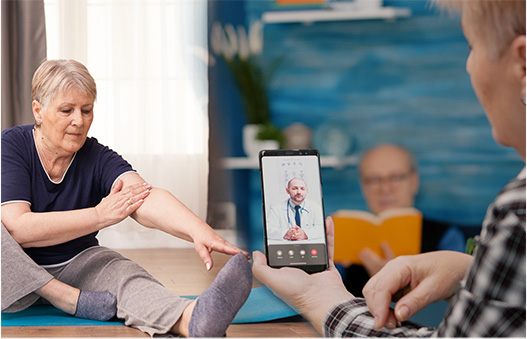Your Inquiries Addressed: Remote Therapeutic Monitoring (Part 1)
July 27, 2023

The CPT codes for RTM represent new opportunities for physical therapists enabling them to be reimbursed for providing additional care to Medicare patients. This development presents a notable opportunity for providers to increase their revenue streams, potentially generating over $160 per patient per episode of care. This also raises a number of questions about how RTM works and how to bill for it. In this blog post, we will address some of the most frequently asked questions related to RTM, offering insights and guidance to help you navigate these new billing codes and workstreams.
-
What is RTM?
-
How does RTM benefit healthcare providers?
What are the new CPT codes for RTM?
-
How can physical therapists incorporate RTM into their practice?
-
Are there any training or certification requirements for RTM?
Remote Therapeutic Monitoring (RTM) is a healthcare practice that allows healthcare providers, such as physical therapists, to remotely monitor and manage patients' progress and outcomes outside of traditional in-person visits. Through the use of advanced technology and secure communication platforms, providers can collect valuable data, assess patient adherence to treatment plans, and make informed decisions about ongoing care.1
RTM offers several benefits for healthcare providers. Firstly, it enables them to extend their reach beyond the confines of physical appointments, allowing for continuous monitoring and support. This improves patient engagement, adherence to treatment plans, and ultimately enhances outcomes. Additionally, RTM opens up new revenue streams for providers, as they can now bill for the time and resources dedicated to remote monitoring services.
The new CPT codes for RTM provide a standardized framework for billing and reimbursement. Physical therapists can now utilize these codes (98975, 98976, 98977, 98980, and 98981) , documents and bills for their remote monitoring services. It's important to familiarize yourself with these codes and ensure accurate documentation to maximize reimbursement opportunities.2
To incorporate RTM into their practice, physical therapists should first assess the feasibility and compatibility of their current technological infrastructure. They will need secure communication platforms, remote monitoring devices, and systems capable of capturing and storing patient data securely. It's crucial to select a reliable RTM platform that complies with HIPAA regulations and ensures the privacy and confidentiality of patient information.3
While there are currently no specific training or certification requirements for RTM, it is advisable for physical therapists to stay informed about industry best practices and guidelines. Professional organizations, such as the American Physical Therapy Association (APTA), may offer resources, continuing education opportunities, and networking platforms to support therapists in incorporating RTM effectively into their practice.
As the field of healthcare continues to embrace technological advancements, Remote Therapeutic Monitoring (RTM) presents significant opportunities for physical therapists to expand their care and increase revenue streams. By understanding the intricacies of RTM, including the new CPT codes, implementation strategies, and billing procedures, therapists can navigate this evolving landscape with confidence. Stay tuned for Part 2 of this blog series, where we will address additional questions related to RTM and provide further insights to support your practice.


